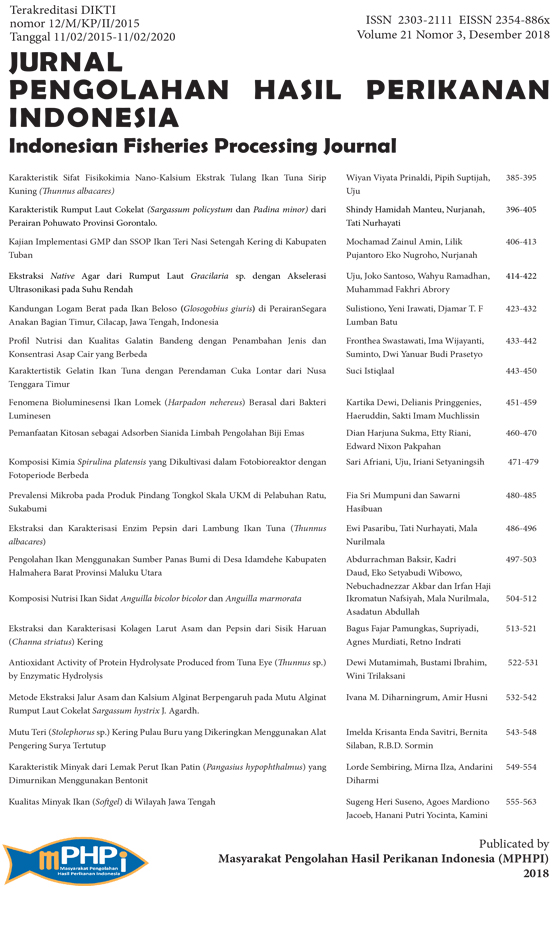Extraction and Characterization of Pepsin Enzyme from Tuna (Thunnus albacares) Gastric
Abstract
Fish gastric is a by-product of fishery waste that has the potential to be developed as a source of pepsin enzyme, such as tuna gastric. The purpose of this study was to extract pepsin from tuna gastric and characterize the enzyme pepsin after dialysis step. The extraction process of pepsin carried out by separating the gastric wall fluid by adding Tris-HCl buffer pH 7.5, then proceed by ammonium sulphate (NH4)2SO4 fractional precipitation from 20% to 80% followed by dialysis. The results showed that the crude extract of the pepsin enzyme had a specific activity of 0.251 mg/mL. Pepsin extract from precipitation with 30-40% fraction had 4,274 U/mg activity and after dialysis, pepsin had 5,137 U / mg activity. The pepsin obtained from gastric tuna had a working temperature in the range of 20-60°C and the working pH is in the pH range 2-3.5. The metal ion, namely FeCl3 and ZnCl2 increased the activity of the pepsin by 2.97 times and 1.92 times.
Authors
PasaribuE., NurhayatiT., & NurilmalaM. (2018). Extraction and Characterization of Pepsin Enzyme from Tuna (Thunnus albacares) Gastric. Jurnal Pengolahan Hasil Perikanan Indonesia, 21(3), 486-496. https://doi.org/10.17844/jphpi.v21i3.24727
Authors who publish with this journal agree to the following terms:
- Authors retain copyright and grant the journal right of first publication with the work simultaneously licensed under a Creative Commons Attribution License that allows others to share the work with an acknowledgement of the work's authorship and initial publication in this journal.
- Authors are able to enter into separate, additional contractual arrangements for the non-exclusive distribution of the journal's published version of the work (e.g., post it to an institutional repository or publish it in a book), with an acknowledgement of its initial publication in this journal.





